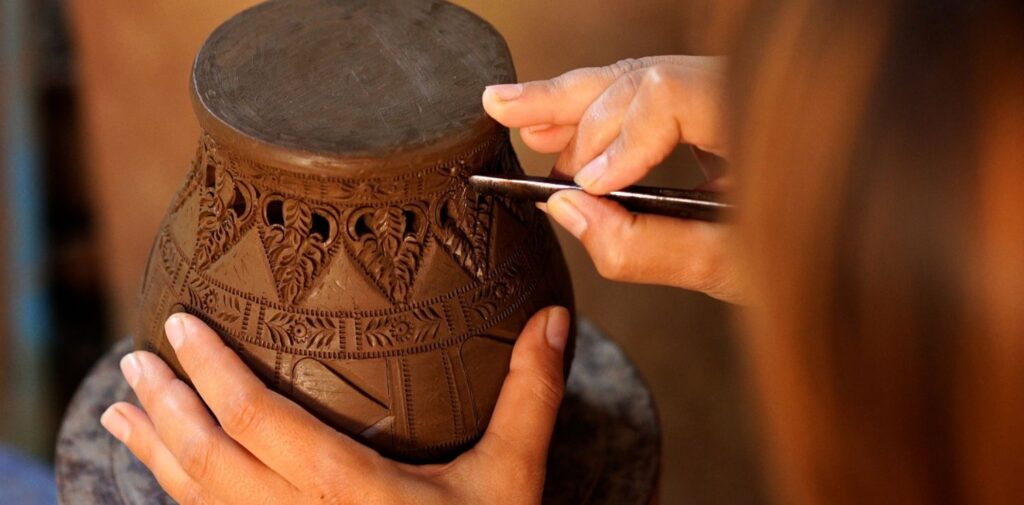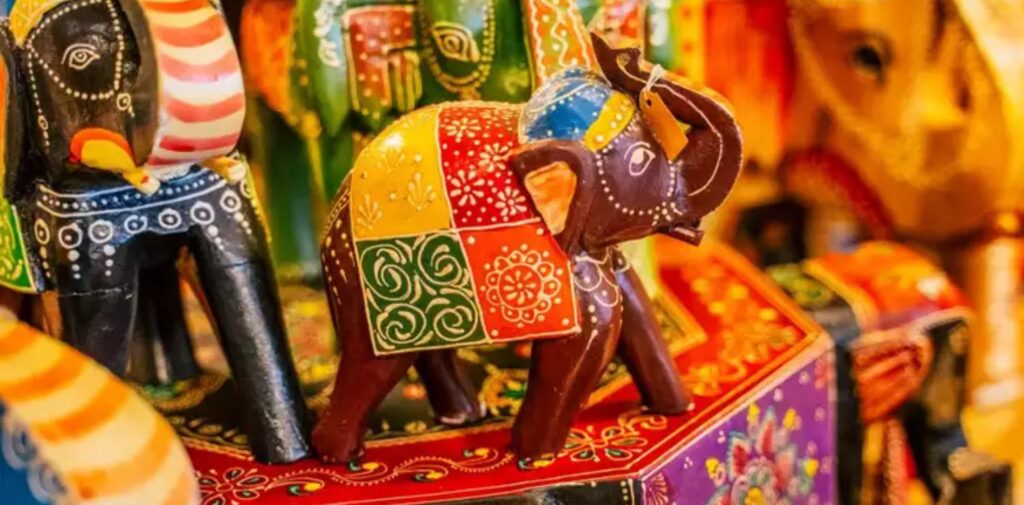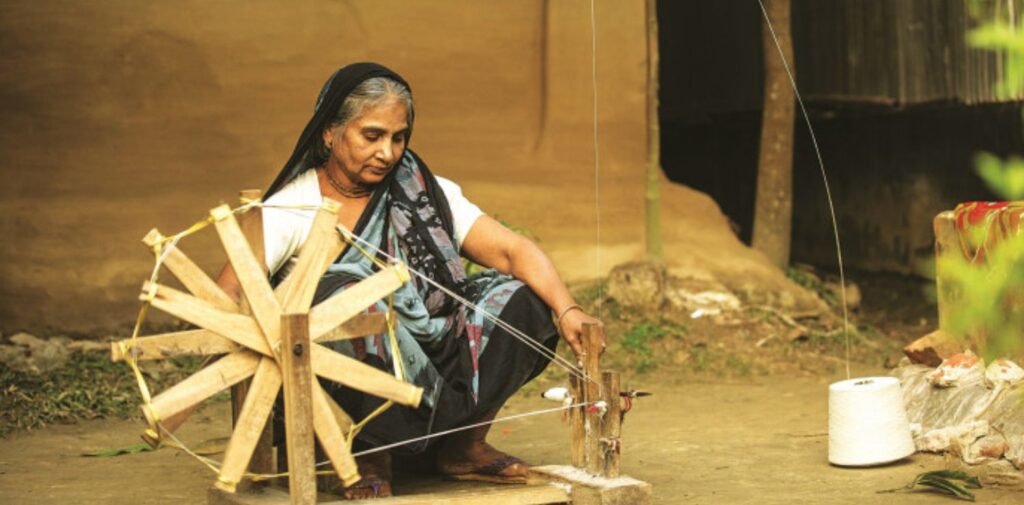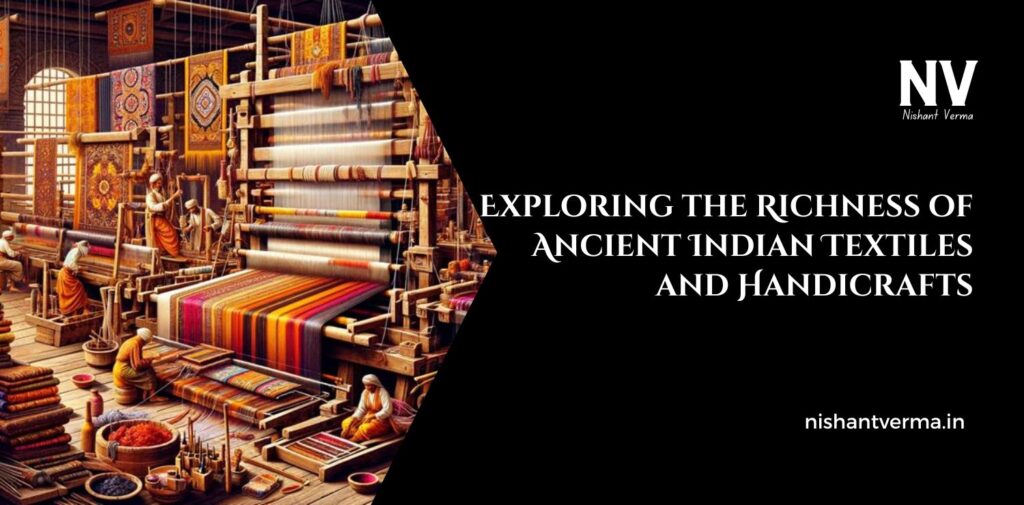India is a land of rich traditions and culture. One of the things that make India so special is its ancient Indian textiles and handicrafts. These arts have been passed down through generations, showcasing the creativity, skill, and stories of the people who lived in this land. The textiles and handicrafts of India are not just items of beauty; they are a part of the country’s history, culture, and even its independence movement. Let’s take a journey through India’s fascinating world of textiles and handicrafts, and learn about their importance, beauty, and how they played a role in India’s fight for freedom.
The Importance of Textiles and Handicrafts in Ancient India
From the very beginning of Indian civilization, textiles have been an important part of daily life. The people of ancient India were not only skilled in weaving beautiful fabrics, but they also created unique handicrafts that reflected their creativity and skills. These textiles and crafts were used for clothing, religious rituals, home decoration, and even as a means of trade. Indian fabrics were known for their quality and beauty, which is why they were loved by people around the world.
India’s textiles and handicrafts are made using a variety of materials such as cotton, silk, wool, and jute. These materials are turned into beautiful products like sarees, shawls, carpets, and pottery. Each region in India has its own unique style of textiles and handicrafts, making the country a colorful tapestry of different traditions and skills.

The Traditional Indian Textiles
- Cotton Fabrics: Cotton has always been an important textile in India. Ancient Indians were experts in growing cotton and weaving it into soft, comfortable fabrics. The famous khadi (a handspun and handwoven fabric) is made from cotton and became a symbol of the freedom movement led by Mahatma Gandhi. Khadi was not just a fabric; it represented self-reliance and unity for the people of India during the struggle for independence.
- Silk Fabrics: Silk is another fabric that has been a part of India’s textile heritage for centuries. The art of sericulture (silk farming) has been practiced in India for thousands of years. The silk from India was highly valued in the ancient world. Indian silk fabrics, such as Kanjivaram and Banarasi sarees, are known for their rich colors and intricate designs. Silk was often used by kings and queens to make royal garments, and it continues to be a symbol of luxury.
- Woolen Fabrics: In the colder regions of India, like Kashmir, wool has been used to create beautiful fabrics for centuries. The pashmina shawls of Kashmir are world-famous for their softness and warmth. These shawls are made from the wool of the pashmina goat, which is found in the high mountains of Kashmir. These woolen fabrics are highly prized and often have intricate designs woven into them.
- Dyeing and Printing Techniques: Indian textiles are famous for their beautiful colors and patterns. Many ancient techniques of dyeing and printing were developed in India. For example, the process of block printing, where wooden blocks with carved designs are dipped in dye and pressed onto fabric, was first practiced in India. Regions like Rajasthan and Gujarat are known for their bandhani (tie-dye) fabrics, and ikat (a dyeing technique) is a popular style in Odisha and Andhra Pradesh. These techniques are not only artistic but also represent the culture and traditions of different regions in India.

The Beauty of Indian Handicrafts
Handicrafts are handmade products that showcase the creativity of Indian artisans. These crafts are often made from natural materials like clay, wood, metal, and stones. Just like textiles, handicrafts have deep historical and cultural significance. They were not just made for daily use, but also for religious ceremonies and festivals. Here are some of the most beautiful and well-known handicrafts of India:
- Pottery and Clay Crafts: India has a long history of making pottery and clay items. From ancient times, people have created beautiful pots, vases, and figurines from clay. The art of making pottery has been passed down for generations. Different regions have their own styles. For example, blue pottery from Jaipur and terracotta pottery from West Bengal are famous for their beauty and craftsmanship. These items are used in homes, temples, and even as gifts.
- Wooden Crafts: Wood has been used to create many beautiful handicrafts in India. The art of carving wood is an ancient skill. In places like Kerala and Rajasthan, artisans create intricate wooden carvings that are used for doors, windows, and furniture. Wooden toys, like those made in Channapatna, Karnataka, are also famous. These toys are not only colorful but also reflect the traditional methods of craftsmanship.
- Metal Crafts: India’s metal crafts are known for their fine detailing and beauty. One famous craft is bidriware from Karnataka, which involves inlaying silver into blackened metal to create beautiful patterns. Brass and copper crafts, like those made in Moradabad, Uttar Pradesh, are also known for their elegance. These metal items, like lamps, utensils, and statues, are used in daily life as well as during festivals and ceremonies.
- Jewelry Making: India is famous for its intricate jewelry. From ancient times, Indian craftsmen have created beautiful jewelry made of gold, silver, and precious stones. The jewelry is not just a form of adornment but also holds cultural and religious significance. The art of jewelry making is so advanced that even today, India is one of the largest producers of gold jewelry in the world.
- Embroidery and Needlework: Embroidery is another important handicraft in India. Different regions have their own special styles of embroidery. For example, chikan embroidery from Lucknow, kantha from West Bengal, and zardozi from Delhi are just a few of the many types of needlework found across India. These intricate designs are used on clothes, bedspreads, and wall hangings, and are admired for their beauty and skill.

Textiles and Handicrafts in India’s Freedom Movement
Ancient Indian Textiles and Handicrafts of India played a significant role in the country’s fight for independence. One of the most important movements was led by Mahatma Gandhi, who encouraged people to wear khadi instead of British-made clothes. Khadi became a symbol of self-reliance and the struggle for freedom. By making their own clothes, Indians were rejecting the foreign goods that had been forced upon them. This not only empowered people but also helped revive traditional Indian crafts, which had been forgotten during British rule.
Many artisans were also involved in the independence movement. They created posters, flags, and banners for protests and marches. The vibrant textiles and handicrafts of India became symbols of pride and resistance. The revival of these arts helped strengthen the unity of the Indian people and reminded them of their rich cultural heritage.
Conclusion: The Lasting Legacy of Ancient Indian Textiles and Handicrafts
The beauty of Ancient India’s textiles and handicrafts is not just in their appearance, but in the stories and traditions they carry with them. These arts represent the creativity, history, and cultural richness of India. From the soft cotton fabrics to the detailed metal works, every piece of Indian craftsmanship tells a story of the people and their way of life.
Today, these Ancient Indian textiles and handicrafts continue to be an important part of Indian society. They are not only used for daily life but are also a major part of India’s economy, as many people around the world buy Ancient Indian textiles and handicrafts. The skills of the artisans are still celebrated and passed down through generations, ensuring that these traditions continue to thrive.
As we admire the beauty of Ancient Indian textiles and handicrafts, we are reminded of the importance of preserving and celebrating our cultural heritage. The creativity of Indian artisans is a gift to the world, and it will continue to inspire generations to come.




